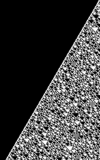Hydra function: Difference between revisions
mNo edit summary |
Added Hydra function rules for Hydra and Antihydra with step counts |
||
| Line 22: | Line 22: | ||
C(2a+1,b)&\xrightarrow{4b+6a^2+23a+26}&C(3a+3,b+2).\\\hline | C(2a+1,b)&\xrightarrow{4b+6a^2+23a+26}&C(3a+3,b+2).\\\hline | ||
\end{array}</math> | \end{array}</math> | ||
|<math>A(a,b):=0^\infty\;1^a\;0\;1^b\;\textrm{E>}\;0^\infty</math>:<math display="block">\begin{array}{|lll|}\hline | |Let <math>A(a,b):=0^\infty\;1^a\;0\;1^b\;\textrm{E>}\;0^\infty</math>:<math display="block">\begin{array}{|lll|}\hline | ||
0^\infty\;\textrm{A>}\;0^\infty&\xrightarrow{11}&A(0,4),\\ | 0^\infty\;\textrm{A>}\;0^\infty&\xrightarrow{11}&A(0,4),\\ | ||
A(a,2b)& \xrightarrow{2a+3b^2+12b+11}& A(a+2,3b+2),\\ | A(a,2b)& \xrightarrow{2a+3b^2+12b+11}& A(a+2,3b+2),\\ | ||
| Line 57: | Line 57: | ||
|<math display="block">b_0=8,b_{n+1}=\begin{cases}\frac{3b_n}{2}&\text{if }b_n\equiv0\pmod{2}\\\frac{3b_n-1}{2}&\text{if }b_n\equiv1\pmod{2}\end{cases}</math> | |<math display="block">b_0=8,b_{n+1}=\begin{cases}\frac{3b_n}{2}&\text{if }b_n\equiv0\pmod{2}\\\frac{3b_n-1}{2}&\text{if }b_n\equiv1\pmod{2}\end{cases}</math> | ||
|} | |} | ||
Now that we have demonstrated the relatedness between the behaviour of both [[Turing machines]], we can return to using the high-level rules. Once we do this, the result is: | |||
{|class="wikitable" | |||
! Hydra !! Antihydra | |||
|-align="center" | |||
|Let <math>C(a,b):=0^\infty\;\textrm{<A}\;2\;0^{3(a-2)}\;3^b\;2\;0^\infty</math>:<math display="block">\begin{array}{|lll|}\hline | |||
0^\infty\;\textrm{A>}\;0^\infty&\xrightarrow{20}&C(3,0),\\ | |||
C(2a,0)&\xrightarrow{54a^2-48a-2}&0^\infty\;3^{9a-8}\;1\;\textrm{A>}\;2\;0^\infty,\\ | |||
C(2a,b+1)&\xrightarrow{54a^2-39a-5}&C(3a,b),\\ | |||
C(2a+1,b)&\xrightarrow{4b+54a^2-3a+4}&C(3a+1,b+2).\\\hline | |||
\end{array}</math> | |||
|<math>A(a,b):=0^\infty\;1^a\;0\;1^{b-4}\;\textrm{E>}\;0^\infty</math>:<math display="block">\begin{array}{|lll|}\hline | |||
0^\infty\;\textrm{A>}\;0^\infty&\xrightarrow{11}&A(0,8),\\ | |||
A(a,2b)& \xrightarrow{2a+3b^2-1}& A(a+2,3b),\\ | |||
A(0,2b+1)&\xrightarrow{3b^2-3b-7}& 0^\infty\;\textrm{<F}\;110\;1^{3b-6}\;0^\infty,\\ | |||
A(a+1,2b+1)&\xrightarrow{3b^2-7}& A(a,3b+1).\\\hline | |||
\end{array}</math> | |||
|} | |||
==Properties== | ==Properties== | ||
Here, <math>s</math> and <math>t</math> are positive integers with <math>t</math> odd. Let <math>0\le k\le s</math> be an integer and <math>H^k</math> is the <math>k</math>th iterate of <math>H</math>. | Here, <math>s</math> and <math>t</math> are positive integers with <math>t</math> odd. Let <math>0\le k\le s</math> be an integer and <math>H^k</math> is the <math>k</math>th iterate of <math>H</math>. | ||
Revision as of 01:07, 4 March 2025

The Hydra function is a Collatz-like function whose behavior is connected to the unsolved halting problems for the Cryptids Hydra and Antihydra. It is defined as: which can alternatively be written as It has some connections to Mahler's 3/2 problem.
Relationship to Hydra and Antihydra
Recall the high-level rules for Hydra and Antihydra:
| Hydra | Antihydra |
|---|---|
| Let : | Let : |
Already, both machines can be observed to have very similar functions. Both have one parameter that increases exponentially with growth factor , and another that takes a pseudo-random walk that depends on the parity of the other variable. This relationship can be strengthened through a change of variables. This is easier to illustrate if these rules were written in the form of integer sequences:
| Hydra | Antihydra |
|---|---|
Now, we will introduce a new integer sequence based on the old one and discover the recursive rules for that sequence. For Hydra, this new sequence is . For Antihydra, this new sequence is . The new rules are found by using instead and substituting for its recursive formula. By doing so, we get:
| Hydra | Antihydra |
|---|---|
After that, we must substitute for its solution in terms of . What results is the following:
| Hydra | Antihydra |
|---|---|
We finish by noting that the if statements simplify to simply checking if is even or odd. After simplifying, we get
| Hydra | Antihydra |
|---|---|
Now that we have demonstrated the relatedness between the behaviour of both Turing machines, we can return to using the high-level rules. Once we do this, the result is:
| Hydra | Antihydra |
|---|---|
| Let : | : |
Properties
Here, and are positive integers with odd. Let be an integer and is the th iterate of .